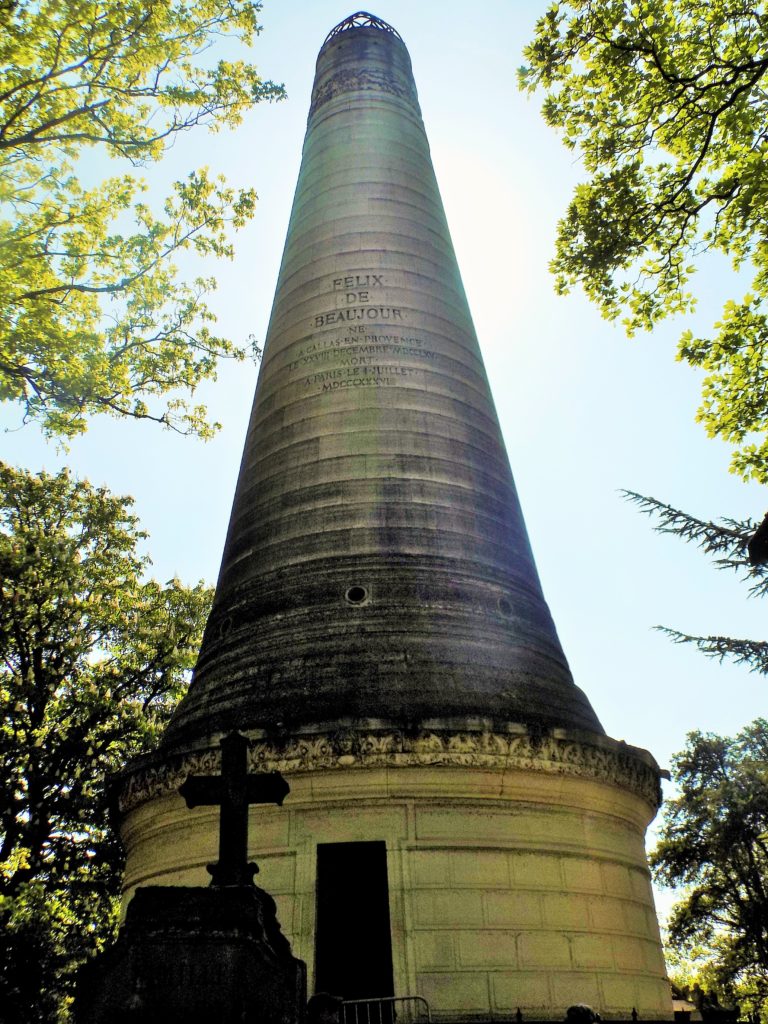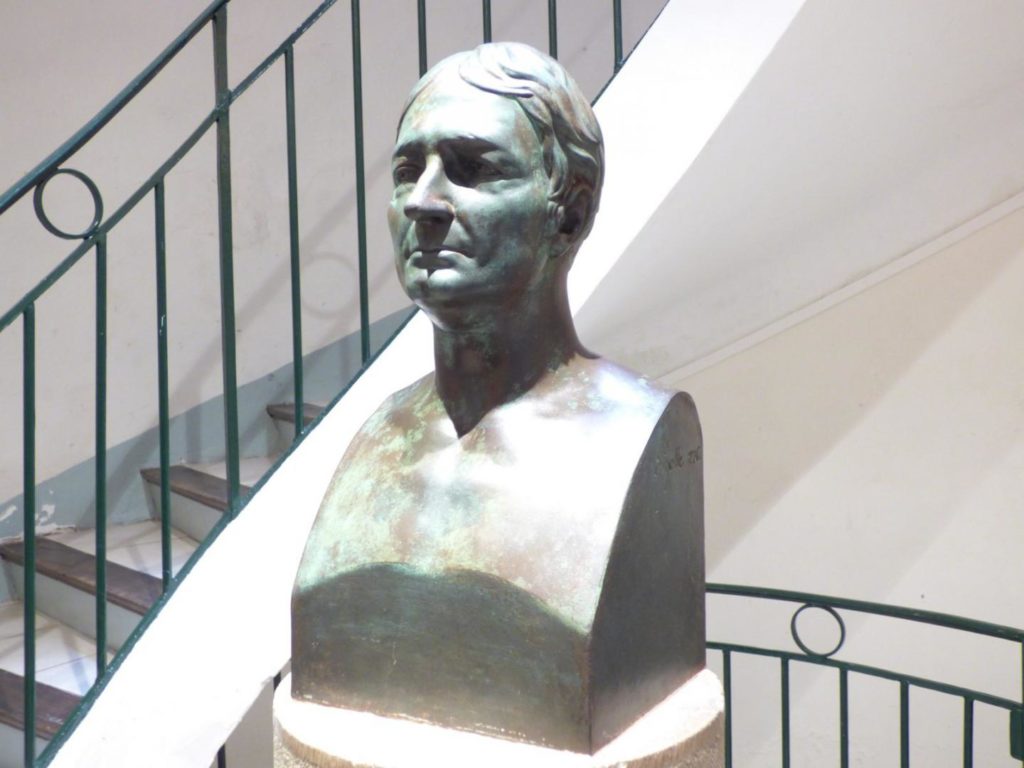Today’s post is the first in a series that will briefly chronicle the lives (or critical aspects of the lives) of six people whose monuments in Cimetière de l’est (AKA Père-Lachaise) I found particularly interesting or whose lives I thought quite eccentric. While it’s true that four of the six men (and yes, they are all men) are among David’s favorites too, in all but one instance (or perhaps two) it’s the stories of the men beneath or within their necropolitan memorials that are worth telling. Lets begin.
Louis FĂ©lix-Auguste-Beaujour.
My interest in Louis FĂ©lix-Auguste-Beaujour – more commonly simply FĂ©lix de Beaujour has a single source and this is it.
My first suspicion on seeing enormous vertical death monuments memorializing men is to wonder if it’s some symbolic overcompensation for something they lacked in life.
In researching de Beaujour’s life, I think any reasonable person would conclude that his was a noteworthy one. I am not convinced, however, that his achievements necessarily merited the 20-meter-tall phallic smokestack that’s supposed to evoke un pain du sucre (loaf of sugar bread) that dwarfs every other monument in Père-Lachaise including the oversized obelisk gracing the tomb of François GĂ©mond – the cemetery’s tallest structure using that particular design. Here’s what I learned about Beaujour.
He was born Louis-Auguste FĂ©ris, the eldest son of François FĂ©ris and Anne Giraud, in December 1765 in the town of Callas du Var which is located about 85 kilometers west of Nice though it’s slightly north of the coast. He was a bright student with an interest in politics and diplomacy who began working for the Ministry of Foreign Affairs (the French equivalent of the U S Department of State) in his twenties and rose fairly quickly through the ranks.
By 1790 he was appointed to serve as secretary of legation (a diplomatic representative office of lower rank than an embassy) first in Munich and the following year in Dresden. He continued climbing the rungs of responsibility and was promoted to consul general in Greece in 1794 and was then appointed to the same position in Sweden in 1799 where he was also placed in charge of business affairs. Louis-Auguste also served in Turkey and in the United States where he spent time as both consul general and, for a very brief stretch, ambassador.
(An image of FĂ©lix wasn’t easy to track down. This one comes from the site valmartin.com and is a bust sculpted in 1936 by an artist named Pigalle. It is in the Beaujour Hall in Callas – a venue local people rent for weddings and such.)
His Wikipedia page lists him as the author of seven books published between 1799 and 1832. These books included studies of the treaties of LunĂ©ville and Amiens and, perhaps anticipating Alexis de Toqueville’s seminal and more influential work some 20 years later, one entitled An Overview of the United States at the Beginning of the 19th Century.
In addition to his diplomatic work, he held several positions within the domestic French government. His early diplomatic service came under the aegis of the nascent First Republic, where he played an important role for a new government struggling to establish its legitimacy. The Revolution of 14 July 1789 prompted the downfall of the monarchy but the First Republic wasn’t officially established until 22 September 1792.
The First Republic lasted until the Coup of 18 Brumaire VII (Brumaire was the second month of the French Republican calendar and VII was the seventh year of the Republic so it would be the equivalent of 9 November 1799.) and the rise of NapolĂ©on Bonarparte. During Bonaparte’s reign, Monsieur FĂ©ris served successively as secretary and president of the Tribunat in 1803. (The Tribunat was one of the four assemblies set up in France by the Constitution of Year VIII. It was a deliberative body that debated laws before passing them along to the Corps lĂ©gislatif for a vote. The other two assemblies were the Conseil d’Etat and the SĂ©nat conservateur.)
Napoléon, of course abdicated his position as emperor in 1814 and, after the 100 days, again in 1815. This latter abdication saw the restoration of the Bourbon Dynasty in the person of Louis XVIII. In 1818, Louis conferred the title of baron and it was then that Louis-Augiste Feris became Félix de Beaujour.
But even with another revolution to come, his career wasn’t quite done. This master of survival and adaptation (and this may have been his greatest skill and achievement) didn’t merely survive the July Revolution of 1830 that placed Louis-Philippe 1 on the throne, he continued to flourish. He was elected deputy of Bouches-du-RhĂ´ne in 1831 where he served until 1834 and was made a peer of France in 1835.
During this period he established the FĂ©lix Beaujour Awards first awarded in 1832. It was a five year prize presented by the Academy of Moral and Political Sciences to the author of the best book on methods to alleviate or prevent poverty. He was elected to that Academy in 1836 just months before his death.
A noteworthy life, yes. Whether it was a life worthy of a 20-meter-tall chimney or rather a 20-meter-tall pain du sucre, I will leave for you to decide.

